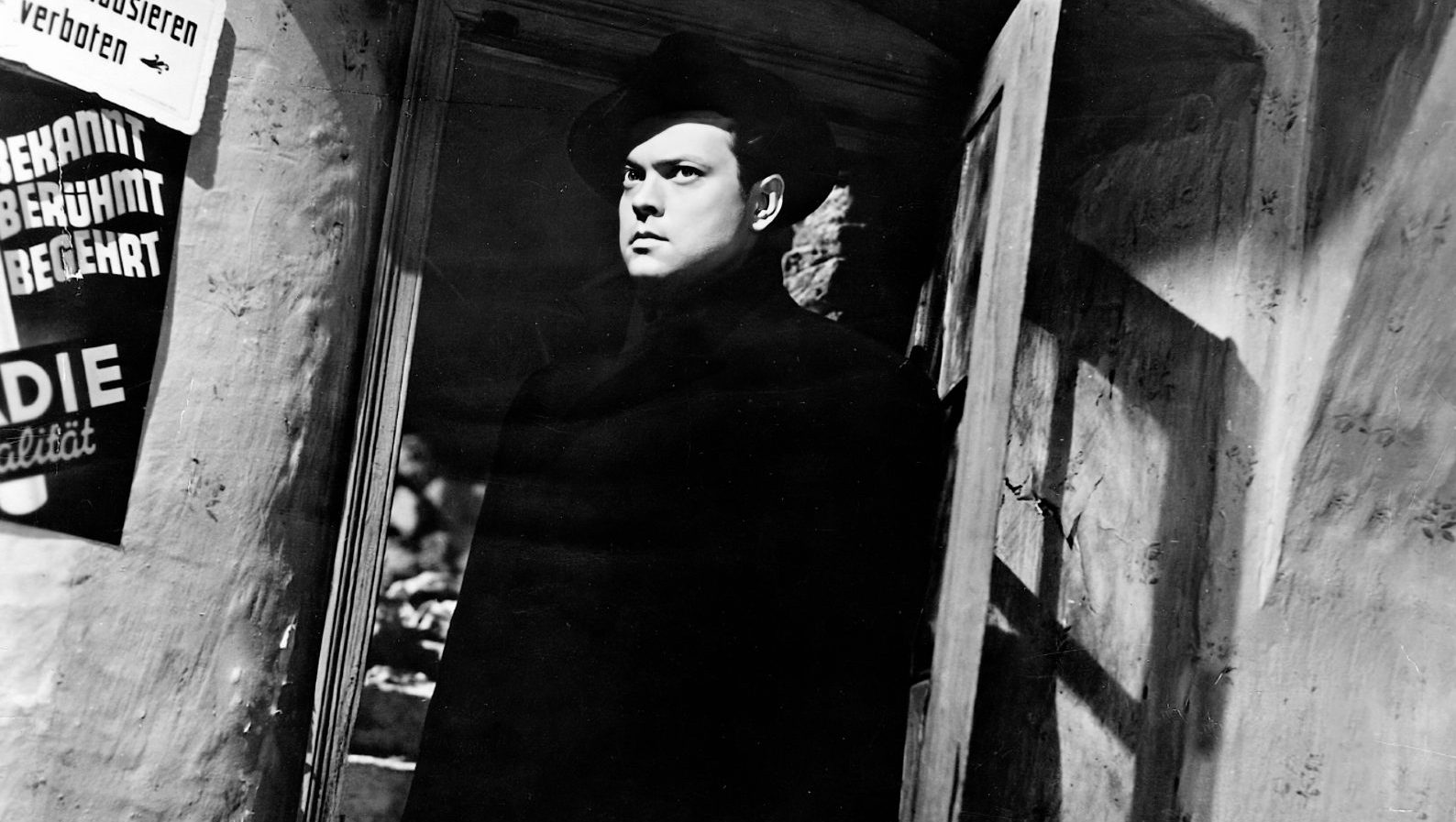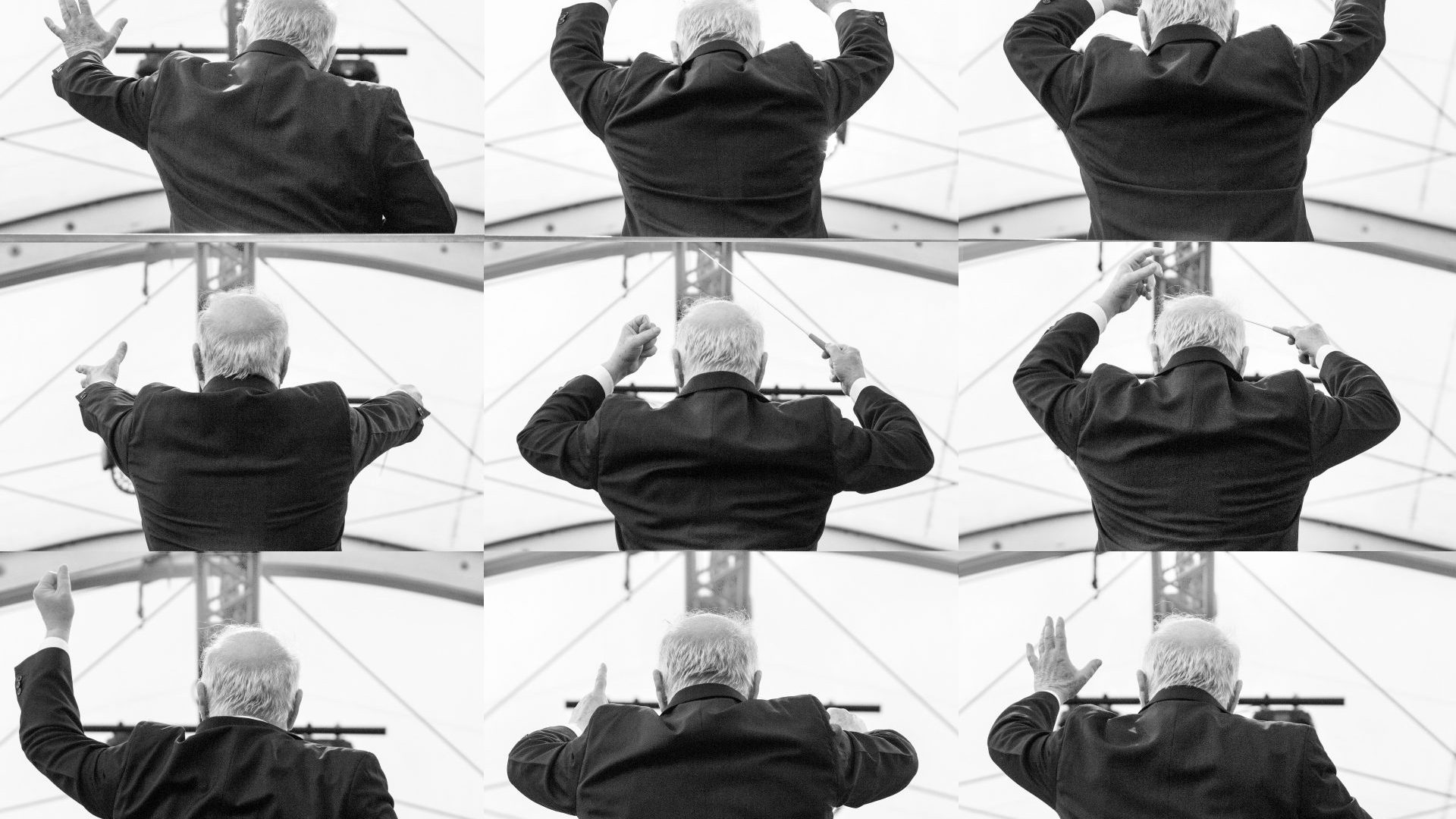It takes a special actor to be on screen for under 15 minutes and still steal an entire picture. As racketeer Harry Lime, Orson Welles conducted the ultimate act of movie larceny in Carol Reed’s The Third Man.
Regularly held up as the greatest British movie ever made, Reed’s 1949 picture has many things going for it. However, it’s Welles, or rather his Lime, that lives longest in the memory, however short his time in the film itself.
From one of the most memorable entrances in movies to the thrilling sewer-set finale via a ride on Vienna’s giant ferris wheel and a conversation on the cultural importance of crime… rarely has one actor accomplished quite so much in so little time.
You might make the case for Brando in Apocalypse Now (another 15-minute wonder), Alfred Molina in Boogie Nights (10 minutes) or Judi Dench as Elizabeth I in Shakespeare in Love (a best supporting actress Oscar for eight minutes of screen time). Or even Beatrice Straight in Network (the same Oscar for five minutes and two seconds). But you’d be wrong.
And what was Mr Welles paid for his contribution to this screen classic? The extraordinary sum of $100,000. Roughly £1m for just two weeks’ work when adjusted for inflation, you might imagine the permanently cash-strapped Welles was appreciative of the producer Alexander Korda’s generosity. But you’d be completely wrong.
Before we focus on the exec’s convoluted hunt for Harry Lime, a little background. The Third Man was written for the screen by Graham Greene – the novella preceded the film only in so much as Greene wrote it to better understand the characters. Put another way, an adaptation The Third Man ain’t.
Perhaps not coincidentally, the author – who hated almost every big-screen stab at his work – considers The Third Man the high point of his rather fraught relationship with film.
Greene’s enthusiasm might also have had something to do with the involvement of Carol Reed, with whom he had recently collaborated on The Fallen Idol (1948).
Already a sizable name in British cinema thanks to his propaganda period picture The Young Mr Pitt (1942) and his blistering, Belfast-set thriller Odd Man Out (1947), Reed’s purple patch was bankrolled by the aforementioned Korda, whose deep pockets and hands-off approach to producing made him something of a director’s dream.
Alas, with The Third Man demanding a lengthy location shoot, Korda was obliged to partner up with infamous American movie exec David O Selznick. The man who thought nothing of interviewing 1,400 actresses before casting Scarlett O’Hara in Gone With The Wind.
Selznick would alienate almost every member of the cast and crew by the time Reed’s film wrapped. It was he, however, who insisted on hiring big names to play the American leads; to have done otherwise would have made The Third Man an impossible sell to audiences in the United States. So it was that Joseph Cotten was cast as Holly Martins, the none-too-bright dime-store novelist who comes to Vienna to catch up with his old friend Harry Lime, only to find he’s now six feet under.
And as for the charismatic Harry, the unavailability of Robert Mitchum – then incarcerated on account of his marijuana use – cleared the way for Cotten’s Citizen Kane co-star, Welles.
Even if Mitch hadn’t been inside, there’s plenty of evidence to suggest that Orson was always Graham Greene’s preferred choice to play Lime. As Simon Callow points out in One-Man Band – the third part of his epic survey of Welles’s life and work – the way the gangster is described in the original novella brings but one person to mind.
“Don’t picture Harry Lime as a smooth scoundrel… the picture I have of [Lime] on my files is an excellent one: he is caught by a street photographer with his stocky legs apart, big shoulders a little hunched, a belly that has known too much good food for too long; on his face a look of cheerful rascality, a geniality, a recognition that his happiness will make the world’s day.”
Forget the fact that Selznick despised Welles and questioned his ability to sell tickets, Greene clearly knew who he wanted as Lime. Now if only Korda could find out where in the world Welles was working…
Welles, it turned out, was in Rome, trying – but mainly failing – to shoot Othello. Keen to make the movie on his own terms, Welles hoped that a combination of the Atlantic Ocean and the fact he was personally financing the adaptation would mean that, for the first time since Citizen Kane, he would have complete artistic control over a project.
Now with insufficient funds to buy film, let alone settle his hotel bill, Welles took one look at the offer Korda wired through… and promptly went to Florence to try – but mainly fail – to shoot Othello there!
So why the midnight flit? According to Callow, “Welles was determined to give Alexander Korda a hard time. Though the great impresario had bailed him out three years earlier… and had been subsidising Welles to the tune of three million lire since he’d come to Italy, and though Welles still had an outstanding three-picture deal with him… he felt ill-used by Korda.”
To be fair, Korda had kyboshed a couple of Welles’s productions – a fresh take on Cyrano De Bergerac; an ambitious reworking of Henry IV: Part I. Still, it’s a rare friend who’d extend the sort of generosity Korda had to Welles.
Maybe then the fault lies with Selznick, whose tight-fistedness was something Welles had personally experienced when the former asked the latter to narrate 1946’s Duel In The Sun. As he would explain to Peter Bogdanovich, Selznick had no intention of paying Welles the $25,000 he had asked for. “Why do you want to do that? [said Selznick]. You’ll just pay it away in income taxes. Let me give you a really nice present!”
Fast forward to 1947, and Welles received a box containing two antique duelling pistols. According to the paperwork, the firearms were valued at $125. Being something of a revenge specialist, Welles promptly had two glass pistols packed with candy couriered to Selznick’s office, then proceeded to tell everyone in Hollywood about the farrago. The only thing Selznick hated more than being laughed at was being described as cheap. One can but imagine how angry he was when he had to pay Welles his $100,000 Third Man fee.
And yet still Welles dragged his feet. As Callow recalls in One-Man Band, “Welles finally turned up in a freezing wet Vienna in November [1948], a week late… His first shot was to be in the sewers. When he realised what that entailed, Welles refused point-blank to descend. ‘I come from California,’ he is alleged to have cried. ‘My throat! I’m so cold!’” So it came to pass that, with the exception of a few short scenes shot on sets in Shepperton, George Orson Welles was all but absent from the thrilling finale of The Third Man. Whenever you see Harry Lime in the real Vienna sewers, you can rest assured that isn’t Welles lumbering away from the authorities.
What then did Welles film during his week in Austria? According to Callow: “All he shot… was [Lime’s] first appearance in the doorway.. and a walk with Holly Martins to and from the Great Wheel in the Prater.” It’s tempting to say this represents a poor return on the producers’ investment. Were we deprived the reveal of an enigmatically smiling Welles in the light falling from an opened window, it’s not just The Third Man that would be the poorer; it’s film itself.
Right up there with Omar Sharif emerging from that mirage in Lawrence Of Arabia, Lime’s entrance is cinema at its most sublime. Entirely of Reed’s design and execution, Welles could nevertheless take all the credit for The Third Man’s other most celebrated moment, the cuckoo clock speech.
In this, Lime – who has made a fortune peddling watered-down penicillin to Vienna’s hospitals – seeks to justify the necessity to society of the criminal to act criminally: “In Italy for 30 years under the Borgias, they had warfare, terror, murder, and bloodshed, but they produced Michelangelo, Leonardo da Vinci and the Renaissance. In Switzerland, they had brotherly love – they had 500 years of democracy and peace, and what did that produce? The cuckoo clock!”
Happy to admit to his mistakes when the occasion took him, Welles would later apologise to the Swiss, since we actually have Germany to thank for the cuckoo clock. Still, the speech’s place in the movie pantheon is guaranteed. Its provenance, likewise, is beyond doubt, with both Reed and Greene acknowledging that every word belonged to Welles, the actor having developed a habit of rewriting his lines whenever he found himself working on a picture he wasn’t directing.
A final point worth making about the canny casting of Welles: in The Third Man, Holly Martins and Harry Lime are old friends whose lives have, in a relatively short space of time, taken them in very different directions. In the years since their original Mercury Theater meeting in the mid-1930s, something similar had happened to Welles and Cotten.
For while Cotten had become an in-demand leading man – Alfred Hitchcock’s Shadow Of A Doubt (1943), George Cukor’s Gaslight (1944) – Welles had become an entity, a one-man film-making republic, directing, writing, producing and starring in pictures as if at any moment he might be barred from each or every discipline.
Seeing them standing across from one another aboard the giant ferris wheel, the air of friendship is palpable. But the men who were so alike in Citizen Kane carry themselves so differently here, you could be forgiven for thinking Martins and Lime were speaking different languages.
His work on The Third Man completed in January 1949, Welles immediately headed back to Italy and wrestles with Othello. By the time that film premiered at Cannes in 1951, The Third Man had enjoyed critical and commercial success. That it received only one Oscar – for Robert Krasker’s stunning cinematography – was as big a crime as any Lime committed.
A Best British Film Bafta was some compensation, as was a wealth of positive reviews. That the BFI declared The Third Man the nation’s finest picture in their 1999 British film survey speaks volumes, as does praise from film-makers as diverse as Steven Spielberg and Steven Soderbergh.
One wonders what Welles made of this sustained success. On the one hand, the popularity of the film and his performance led to his voicing a younger, less cynical incarnation in the hit BBC radio series The Adventures Of Harry Lime, recorded and released in 1951-52.
Well paid as that work was, it must have eaten at Orson that, when accepting $100,000 to star in the film, he simultaneously rejected the opportunity to work for scale in return for a percentage of The Third Man’s takings. Had he done so, he might have attained the financial freedom he long sought but rarely attained.
Welles’s choice turned out to be just one flawed decision in a life that would feature many. But then, as Harry Lime tells his friend: “Oh, Holly, you and I aren’t heroes. The world doesn’t make any heroes outside of your stories.”



